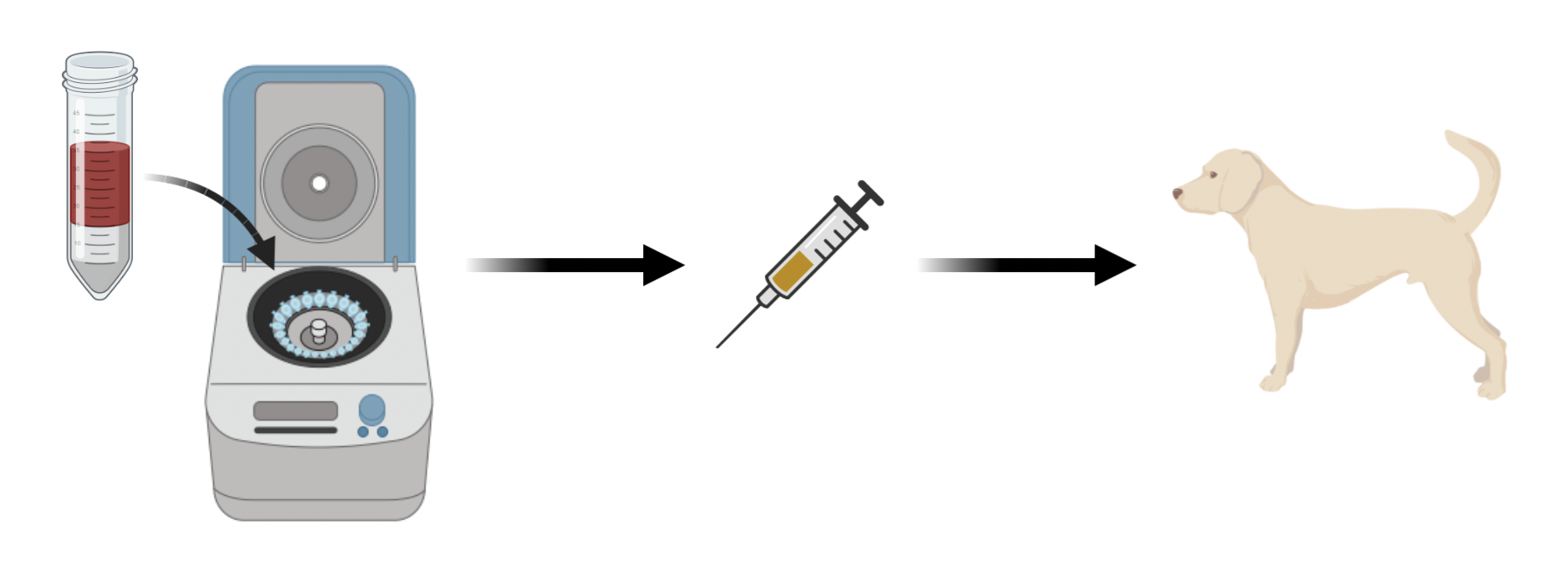In the ever-evolving field of veterinary medicine, two regenerative therapies have garnered significant attention for their potential to enhance healing and improve the quality of life for animals: Adipose-Derived Stem Cells (ADSC) and Platelet-Rich Plasma (PRP). Both therapies harness the body’s natural healing mechanisms but do so in different ways, offering unique benefits and possibilities when used together. How do you know when to use Stem Cell, PRP, or both? Can it help your patients? What type of applications can these therapies be used for? Read below to view key insights!
Understanding the Basics
Adipose-Derived Stem Cells (ADSC)
ADSCs are stem cells extracted from an animal’s fat tissue, typically through a process called liposuction. These cells are a type of mesenchymal stem cell (MSC), known for their ability to differentiate into various cell types, such as bone, cartilage, and muscle. ADSCs are particularly valued for their regenerative properties and their capacity to reduce inflammation, making them a powerful tool for treating conditions like osteoarthritis, tendon injuries, and joint disorders.
Fat (Adipose) tissue is a proven, rich and safe source of Adult Stem Cells and when isolated properly can offer the ability to treat the underlying cause of disease. Mesenchymal stem cell therapy (MSCT) involves the use of adult-derived mesenchymal stem cells to potentially restore health and proper function to damaged or diseased cells, tissue, and/or organs. MSCT has been widely researched in human medicine and used to treat osteoarthritis (OA), tendinopathies, and sports-related injuries, inspiring veterinary research to evaluate this modality in dogs.1 Below is an excerpt from a peer-reviewed article on Mesenchymal Stem Cell Therapy by Nicole S. Amato, DVM, DACVS (Small Animal) This article provides some good information on the type of stem cell therapy that we utilize.
MSCT is relatively easy to carry out in a small animal practice, owing largely to its point-of-care qualities. With a multitude of products available, preparation, processing, and administration can be performed in a properly equipped veterinary practice as opposed to a referral laboratory or research facility.1
Platelet-Rich Plasma (PRP)
PRP or Platelet Rich Plasma has exploded in popularity in both human and veterinary medicine. PRP therapy involves drawing a small amount of blood from the animal, which is then processed to concentrate the platelets. These platelets are rich in growth factors that promote healing and tissue regeneration. PRP is commonly used to treat soft tissue injuries, ligament and tendon damage, and even joint degeneration. The procedure is relatively simple, quick, and minimally invasive, making it an attractive option for many veterinarians and pet owners.

Key Differences Between Stem Cell & PRP Therapy

Synergistic Potential
While ADSC and PRP therapies have distinct differences, they can also complement each other when used together, potentially enhancing the overall therapeutic outcome. For instance, PRP can be used to prepare the injured site by reducing initial inflammation and promoting early-stage healing. Following this, ADSCs can be introduced to provide long-term regenerative support, further reducing inflammation and aiding in the formation of new, healthy tissue.
Combining ADSC and PRP therapies can be particularly beneficial in treating complex or chronic conditions where both immediate healing and long-term regeneration are desired. This synergistic approach can lead to improved mobility, reduced pain, and a better quality of life for the animal.
Conclusion
Both Adipose-Derived Stem Cells and Platelet-Rich Plasma therapies offer promising avenues for regenerative veterinary medicine. Understanding their differences and how they can work together allows veterinarians to tailor treatment plans to the specific needs of each animal, maximizing the potential for recovery and improved health. As research continues to advance, the integration of these therapies could revolutionize the way we approach animal care, offering hope for more effective and holistic treatment options.
On-Demand Webinar: Stem Cells Vs. PRP
How can you get started with Regenerative Medicine in your practice? The first step is to schedule a virtual webinar with our team so we can overview our system and how it can be used in your practice to improve patient outcomes! Click here to schedule a Lunch & Learn for your veterinary practice on a day and time that works best for you.
Sources: Nicole S. Amato, DVM, DACVS (Small Animal), Mesenchymal Stem Cell Therapy https://www.cliniciansbrief.com/article/mesenchymal-stem-cell-therapy



Recent Comments